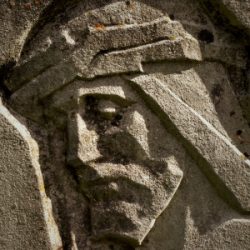Welcome readers! Please subscribe through the buttons on the right.
(Read this series from the beginning at Part 1 and Part 2.)

The passages in the book of Acts are not without their problems. Yet what is unmistakable in each of them is their emphasis, not on salvific purpose in Jesus’ death, but in how God overcame the injustice of his murder through a life-giving, death-conquering, death-reversing resurrection.
Womanist theologians have shaped my thinking and faith journey. I owe them so much.
During the Easter season, for instance, I’m often reminded of statements like this one from Delores Williams in her classic work, Sisters in the Wilderness: The Challenge of Womanist God-Talk:
“Matthew, Mark and Luke suggest that Jesus did not come to redeem humans by showing them God’s ‘love’ manifested in the death of God’s innocent child on a cross erected by cruel, imperialistic, patriarchal power. Rather, the texts suggest that the spirit of God in Jesus came to show humans life— to show redemption through a perfect ministerial vision of righting relations between body (individual and community), mind (of humans and of tradition) and spirit. A female-male inclusive vision, Jesus’ ministry of righting relationships involved raising the dead (those separated from life and community), casting out demons (for example, ridding the mind of destructive forces prohibiting the flourishing of positive, peaceful life) and proclaiming the word of life that demanded the transformation of tradition so that life could be lived more abundantly . . . God’s gift to humans, through Jesus, was to invite them to participate in this ministerial vision (“whosoever will, let them come”) of righting relations. The response to this invitation by human principalities and powers was the horrible deed the cross represents—the evil of humankind trying to kill the ministerial vision of life in relation that Jesus brought to humanity. The resurrection does not depend upon the cross for life, for the cross only represents historical evil trying to defeat good. The resurrection of Jesus and the flourishing of God’s spirit in the world as the result of resurrection represent the life of the ministerial vision gaining victory over the evil attempt to kill it. Thus, to respond meaningfully to black women’s historic experience of surrogacy oppression, the womanist theologian must show that redemption of humans can have nothing to do with any kind of surrogate or substitute role Jesus was reputed to have played in a bloody act that supposedly gained victory over sin and/ or evil.” (Sisters in the Wilderness: The Challenge of Womanist God-Talk, p. 130)
For Williams, it is the resurrection and the kingdom of God theme in the Jesus story that is life-giving. Not Jesus’ death. Jesus came, not to die, but to show us how to live. “The kingdom of God theme in the ministerial vision of Jesus does not point to death; it is not something one has to die to reach. Rather, the kingdom of God is a metaphor of hope God gives those attempting to right the relations between self and self, between self and others, between self and God as prescribed in the sermon on the mount, in the golden rule and in the commandment to show love above all else.” (Sisters in the Wilderness: The Challenge of Womanist God-Talk, pp. 130-131)
I also want to lift up the voice of Rev. Dr. Kelly Brown Douglas, who weaves even nonviolence into the meaning of the resurrection story event. She writes:
“The resurrection is God’s definitive victory over crucifying powers of evil. Ironically, the power that attempts to destroy Jesus on the cross is actually itself destroyed by the cross. The cross represents the power that denigrates human bodies, destroys life, and preys on the most vulnerable in society. As the cross is defeated, so too is that power. The impressive factor is how it is defeated. It is defeated by a life-giving rather than a life-negating force. God’s power, unlike human power, is not a ‘master race’ kind of power. That is, it is not a power that diminishes the life of another so that others might live. God’s power respects the integrity of all human bodies and the sanctity of all life. This is resurrecting power. Therefore, God’s power never expresses itself through the humiliation or denigration of another. It does not triumph over life. It conquers death by resurrecting life. The force of God is a death-negating, life-affirming force . . . God does not fight death with death. God does not utilize the violence exhibited in the cross to defeat deadly violence itself . . . through the resurrection, God responds to the violence of the cross–the violence of the world—in a nonviolent forceful manner. It is important to understand that nonviolence is not the same as passivity or accommodation to violence. Rather it is the forceful response the protects the integrity of life. Violence seeks to do another harm, while nonviolence seeks to rescue others from harm. It seeks to break the very cycle of violence itself. The forces of nonviolence actually reveal the impotence of violent force. That God could defeat the unmitigated violence of the cross reveals the consummate power of the nonviolent, life-giving force that is God.” (Stand Your Ground: Black Bodies and the Justice of God, p. 178-180)
This weekend, for those of us who choose to commemorate the resurrection event in the Jesus story and all the meaning that story event symbolizes, I hope that our easter rituals will further shape us into death-negating, life-giving people. That we will commit more deeply to life-affirming work in our world. That together we will continue to work toward a world that is a safe, compassionate, and distributively just home for everyone.
Happy upcoming Easter to each of you.
Love can conquer hate.
Equity can conquer fear and greed.
Inclusion can conquer exclusion and marginalization.
Life-affirmation can conquer death-dealing.
Forceful nonviolence can conquer life-negating violence.
The golden rule is this way of life.
Jesus is risen.
He is risen indeed.













